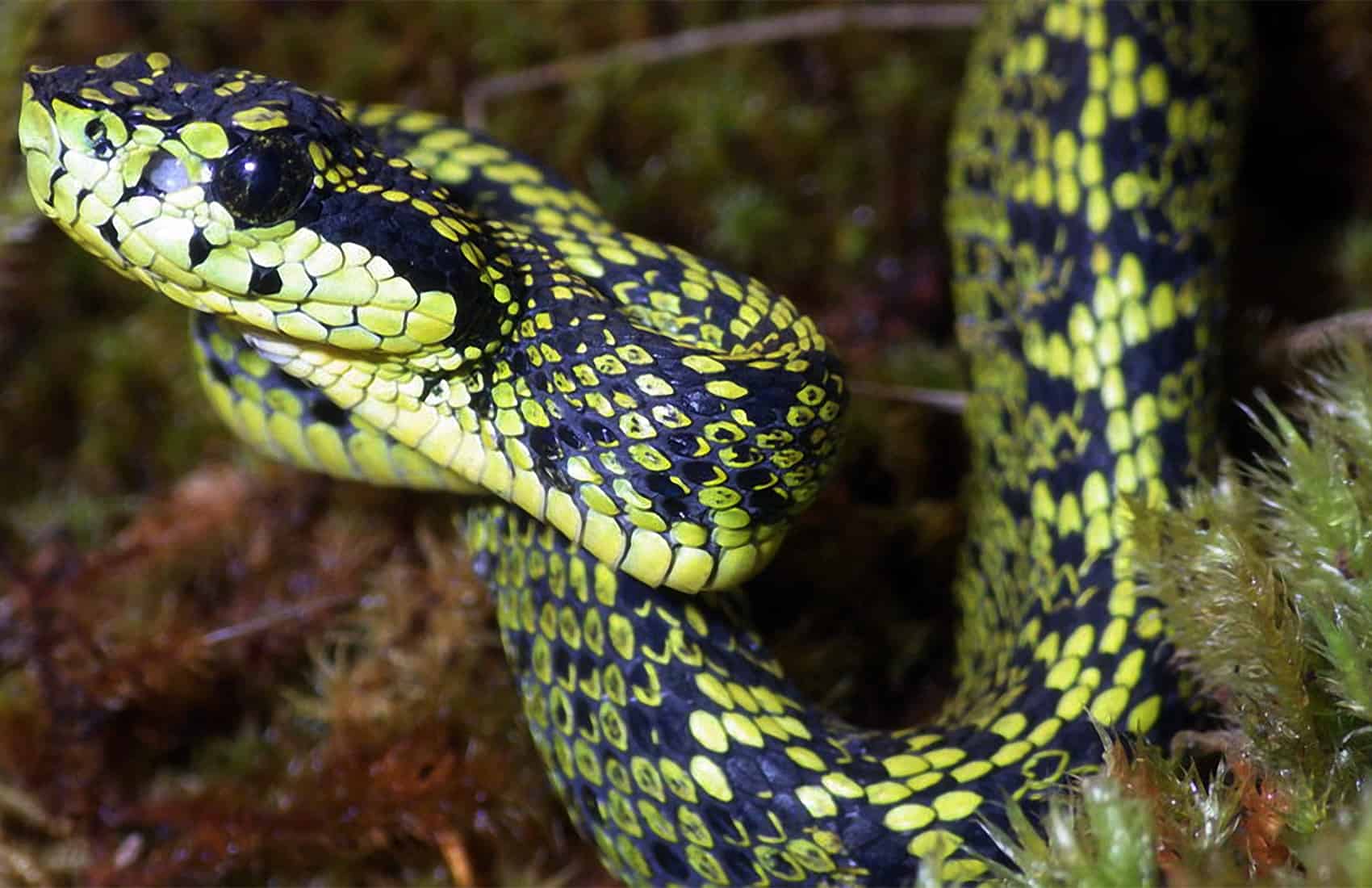A group of researchers from the U.S. and Costa Rica announced this week the discovery of a new species of venomous snake in the mountains of Costa Rica that they’re calling the Talamancan palm-pitviper (Bothriechis nubestris). Researchers from the University of Central Florida (UCF) and the University of Costa Rica (UCR) discovered the snake in the cloud forests of the Talamanca Mountain range, which runs through most of Costa Rica and northern Panama. Their research is published in the July 15 online issue of the journal Zootaxa.
The species went unrecognized for more than 150 years, likely because it looks almost identical to another species called the black-speckled palm-pitviper (Bothriechis nigroviridis). The two species share green and black coloring and generally measure less than 60 centimeters (24 inches) long, although some reach nearly 102 cm (4o in.). Their bodies are thin, and both live at elevations ranging from 2,400 to 3,000 meters above sea level (7,800 to 9,800 feet).
Their main differences are genetic, but they also have some physical differences, mainly in the type and number of scales covering certain parts of their bodies. The B. nubestris has more ventral (belly) scales. It also has two rows of irregular scales under its eyes, the scientists reported. The Talamancan palm-pitviper is usually found in trees where its green and black pattern provides optimum camouflage.
Scientists believe its habitat is comprised of a 100-kilometer area within the northern region of the Talamanca range. According to the UCR’s Clodomiro Picado Institute, a toxin research center and producer of snake antivenin, the B. nubestris brings the total number of snakes in Costa Rica to 143, of which 23 are venomous.

The investigation
The team first discovered evidence of the new species in 2001 during a genetic analysis of the palm-pitviper clade, UCF biologist and professor Christopher Parkinson, who led the team that made the discovery, said in an article published on the university’s website. Mahmood Sasa, a UCR professor and researcher at the Clodomiro Picado Institute, said the B. nubestris is a cryptic species, meaning its physical characteristics are very similar to another species, but it has major genetic differences.
Sasa, who co-authored the research paper, said the B. nubestris is characterized by its stylized thin body, its agility and its prehensile tail that allows it to support its body while passing from tree branch to tree branch. Researchers are now interested in seeing how the venom of this new species compares to other palm-pitvipers, especially the black-speckled palm-pit viper because of the similarities between the two species.
Parkinson from the UCF said the discovery should serve as a reminder that there may be other species out there yet to be found. “This discovery highlights the necessity for strong conservation initiatives,” he said, adding that many undisturbed areas around the world are being developed before scientists get a chance to document their flora and fauna.
“There’s no telling what other species are yet to be found and how they might benefit mankind,” he said.






